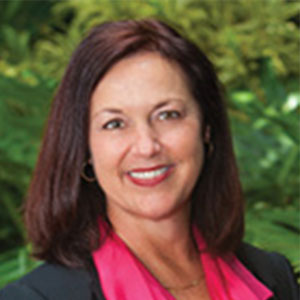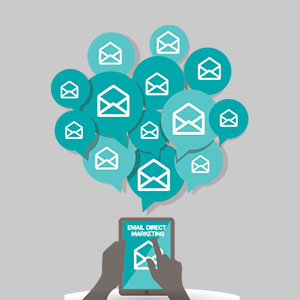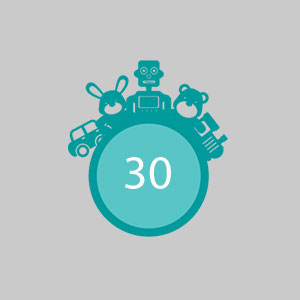Strategy September 18, 2015
And the Answer Is. . .Experts deliver in-depth insights to some of your more pressing questions facing industry sales reps.
Experts deliver in-depth insights to some of the most pressing questions facing industry sales reps. Draw on their knowledge to build your business.
Experts deliver in-depth insights to some of the most pressing questions facing industry sales reps. Draw on their knowledge to build your business.
Websites selling promotional products: That’s the biggest competitive threat, according to 41% of distributors surveyed by Counselor magazine for its 2015 State of the Industry report. Stands to reason that, “How do I respond to ‘I can get this cheaper online?’” is one pressing question industry sales reps are asking.
We have the pros with the answers. In the pages ahead, sales and marketing aces weigh in with wisdom that will position you for success when facing important questions about everything from dealing with such objections and sales growth, to email marketing and product safety. What follows are questions most often heard and the experts’ best advice, following their years of experience.
Question 1: “How do I land a Fortune 500 company as a client?”

Respondent: Tej Shah, VP of Marketing & E-Commerce, Overture Premiums & Promotions (asi/288473)
Answer: Landing a whale of a client is every salesperson’s dream. Who doesn’t want to work with a brand that’s recognized all over the world? More importantly, (and let’s be honest, this is definitely more important) who doesn’t want a client that spends millions of dollars on promotional items? I sure like the idea of both.
Large corporate clients offer a consistent influx of orders, higher average order sizes and greater volume. The majority of our company’s business today is comprised of large corporate clients. Maybe we’re just lucky, or maybe we have the right approach. Or maybe it’s a bit of both. But from my experience, there are a few key things to take into consideration when approaching a Fortune 500 company:
Why You? Yay, you sell promotional products! Good for you. So do about 20,000 other companies. So why should this company work with you? Take a step back and put yourself in the shoes of your prospect. They get solicited every single day. Usually, many times a day. What sets you apart? You’re competing in a saturated marketplace, so make sure your message is clear as to what makes your company different.
Timing is Everything: This is the ‘X’ factor here. Many major corporations will have contracts with their vendors, and will only consider new vendors through a formal vetting process (RFPs), which comes around every few years. Other corporations simply may not be looking to make a change at that specific time. The key here is to keep the lines of communication open. Stay in touch and follow-up regularly, so when they do have a need arise, they remember to call you (Please note: Spamming them with emails won’t work too well for ya).
No Gobbledygook: Drop the industry jargon and the acronyms. And please, drop the buzz words. You might be the Einstein of the promotional products industry, but there is no need to get super-technical to the point that you confuse your customers. Keep your message straightforward and simple.
Question 2: “How do I overcome pricing objections, such as ‘I can get this cheaper online?’”

Respondent: Jennifer Heller, Division Manager, VGM Corporate Specialties (asi/351896)
Answer: You’re cruising through a meeting with a new client, you glide through their project needs, then ask for the sale and all of a sudden, whiplash, the customer says, “I can get this cheaper online.” Ever been confused by how quickly a meeting went from smoothly uncovering their needs to the brakes of objection? These nasty little speed bumps are bound to pop up in meetings.
Overcome them with a strategy that helps the client visualize the value you deliver.
Pump the brakes from the beginning. Don’t let them rush you through the meeting with a brief history of the company and a jump to the product and pricing conversation. Start meetings with new clients with strategic questions that uncover pain points during their past purchasing. Ask questions like, “Have there ever been issues with past corporate apparel quality or timely delivery?”
Responses that remind them of the pain of those previous experiences become your insurance policy. Acknowledge these pain points after each is disclosed by explaining the processes you have in place that ensures the buyer won’t crash while working with you. This helps create trust. If the previous provider missed the event, explain, “I have never missed a deadline. To prevent this, I always order for delivery a few days prior to your actual event so if there is any concern, the vendor has time to reproduce and still make the event delivery.” Then add, “Planning with my clients and reminding them of best order dates means less stress and generally lower-cost shipping.’
With this process, you’re in the driver’s seat, so ask if you can help them create a plan for their upcoming events so you can research product early, get the best pricing and remind them when it’s the best time to order. If they still have objections about pricing, bring their pain points back around: “This product may be a bit more than the one that looks just like it online, but this one is through a credible vendor who has a history of meeting deadlines and making my clients look good.”
Question 3: “What’s the best way to handle client complaints about product quality (especially when they previously approved a sample)?”

Respondent: Danette Gossett, Owner, Gossett Marketing (asi/212200)
Answer: As a promotional products consultant, I strive to provide a quality product and result for my clients. Recently, I had a situation where my client received a sample, liked it and placed an order. When they received the order, they said the product wasn’t the same. While I operate on the premise that the customer is always right, in this situation I wasn’t so sure. We had produced this product many times without complaint.
First, I needed to ask my client a few qualifying questions. Was it the imprint quality that was at issue? Many times a client will say the product is horrible when they really mean the imprint isn’t what they expected. Second, was the product damaged or not in good working order? With this clarified, we could determine the true issue.
While the client said the item was similar to the sample, they felt it was too lightweight and the color of the product was not the same. My first course of action was to acknowledge that there might be an issue. I asked them to send me samples to review. Next, I contacted my supplier to be sure that they hadn’t changed anything. They said they had not.
Well, when we received the printed samples they were indeed different from the samples we had originally received. I contacted the supplier again and found out that they had changed factories and didn’t realize that the products weren’t identical. The supplier apologized and replaced the order.
One of the keys I have found to working in these types of situations is to be very empathetic with my clients. In this case, the client was right and the supplier had changed products. The best course of action is to always research the full situation and then recommend a solution.
If the client had been in error, I would have spoken to them again to determine why the change of agreement on the product. Many times they didn’t get approval on the item and are trying to find a way out of their internal situation. In those cases, I try to work with them for a resolution – maybe a small discount will appease. Often, that makes them a thankful, long-term client.
Question 4: “How is email marketing evolving? What are some best practices that can be implemented to maximize success?”

Respondent: Natalie Henley, President, Volume Nine, an Internet marketing company
Answer: Content marketing is exploding and email is exploding right along with it. It’s not so much that email marketing techniques are evolving, so much as content marketing has evolved and email is a key amplification strategy for your content program. So, if you follow me on this big idea, here are a few tips to ramp up your email program:
Focus On Content Worth Amplifying: This point is really hard to understate. Your audience is selfish. They want to know what’s in it for them. Great email marketing strategies start with great content you are promoting that is tailored for what your audience cares about.
Be Mobile Compatible: More users are opening emails on mobile phones than ever before, which also means your mobile opens are likely to be mobile website traffic. So, ensure your emails are mobile compatible (most third-party email programs will do this for you). Also, ensure your website landing pages are equally mobile-compatible.
Keep it Simple: Great content that is compatible with a mobile device doesn’t need a lot of bells and whistles. Some of our most effective emails have no imagery and mimic the look and feel of a typical Gmail email. Spend 90%-plus of your time creating awesome content (an offer, a contest, a viral blog post, a thought leadership article, etc.) and 10% of your time drafting your email to promote it.
Keep Testing: Every day I come across studies that say things like “Saturdays have better click-through rates” and “subject lines should lead with the benefits, e.g. the word get.” However, the truth is that you must constantly test concepts like these to see what your audience responds to best. You may be shocked that “hey” as a subject line ends up being your most effective, or that sending an email on a Sunday afternoon outperforms other days.
Prospective Value

Question: “How do I determine the potential spend of a prospect?”
Respondent: Ed Levy, President/Founder, Edventure Promotions (asi/186055)
Answer: Sometimes, the obvious approach is best. Simply ask them how much they are currently spending. While this gives you a good idea of status quo, it’s not always equal to the potential an organization can spend on promotional products. The potential spend could be higher, and if you know that, then you can plan to devote the appropriate amount of time to getting the client to maximize its spend.
To determine potential spend, first understand how a company sells and to whom they sell. Here are some qualifying questions I ask myself: Do they have a direct sales force, insides sales or a distributor/re-seller channel? How long is their sales cycle? Do they sell a self-depleting product or once-in-a-lifetime product/service? Do they participate in trade shows? All of these answers funnel into my non-scientific formula to aid in determining what a client/prospect should be spending on promotional products.
Next, taking all the answers into consideration, I use a multiplier to determine two things: 1) How much should they be spending internally? 2) How much can they afford to spend on bringing in new business?
For internal estimates, I use $5.00 up to $100 per person value depending on the total number of employees. This is taking into consideration incentives, holidays, rewards, anniversaries, on-boarding and general creature comforts that are beyond standard office supplies.
For external estimates, I look at the price of their product, and find out the industry average order size and profit margin. Then I ask myself, ‘If I were a salesperson at Prospect X’s company, how much would I pay to have a meeting with a qualified prospect?’ The answer is calculated by taking a percentage of the gross profit margin you are willing to invest and allocating it to promotional product purchases.
Question 5: “How can I continue to grow my sales when I have no additional time servicing what I already have?”

Respondent: Dale Limes, Senior Vice President of Sales, HALO Branded Solutions (asi/356000)
Answer: Every salesperson who continues to grow their business reaches a point where time becomes the major obstacle to further growth. That number could be different based on the distributor’s back-end support model. For example, a salesperson working for a smaller distributor who is required to submit and follow up on their orders, collect receivables, etc. might be too stretched at $500,000, whereas a salesperson for a very large distributor with a robust back-end support system might not be stretched until $1 million.
Regardless, when a salesperson feels they can’t find the time to grow, they should take a step back and assess the underlying issues. Often, the problem is too many accounts, and it’s time to jettison some of the low-hanging fruit and time-wasters. This frees time for additional prospecting. Another issue could be time management. A good sales manager will review “golden hour” activities and help a salesperson find valuable sales time by eliminating activities not related to selling. Finally, if a salesperson is efficient with their time, and has a solid back-end office, it might be time for the distributor to pitch in with an additional support person.

Nearly 60% of B2B marketers say email is an extremely effective content marketing tactic.
Question 6: “What essential things do I need to know about product safety?”

Respondent: Leeton H. Lee, VP, Regulatory Compliance and General Counsel, ETS Express (asi/51197)
Answer: Having a good understanding of end-buyers’ concerns in the area of product safety will often be a pivotal point in making a good sale or landing a new client. Indeed, the bigger the brand, the more compliance requirements end-buyers will have for distributors and suppliers to meet, so going into a sales pitch should always be supplemented with a firm grasp of product safety, quality and compliance basics.
From a regulatory standpoint, every rep should be conversant with the following:
U.S. Consumer Product Safety Improvement Act (“CPSIA”): This regulation is the most comprehensive safety act in U.S. history, and end-buyers want to hear the magic words that the products they buy will pass CPSIA testing.
Cal Prop 65: This regulation applies to all products distributed in California. If any product contains and exposes consumers to any of the 900-plus chemicals on the list that can cause cancer or reproductive harm, it must either have a warning label on it or the item must comply with the maximum chemical limits established by regulators.
Other U.S. federal regulations that may apply to products: For example, items like drinkware and health and beauty products such as lip balm, sunscreen and hand sanitizer must also comply with FDA requirements. Also, always be mindful of various Federal Trade Commission (“FTC”) and U.S. Customs and Border Protection (“CBP”) regulations that can impact our products and shipments.
Education is the key to all of this. Seek insights from trusted suppliers, who should be experts. Learn about your vendors’ protocols for ensuring their products meet safety standards. Attend product compliance seminars or webinars offered by testing labs, and subscribe to testing labs’ free electronic newsletters and alerts, which highlight things like regulatory changes and product safety recalls. A couple labs relevant to our industry include UL Verification Services (http://industries.ul.com/subscription) and ANSECO Group (www.ansecogroup.com/subscribe-to-our-mailing-list/). Also, visit www.saferproducts.gov for information on recent recalls.

Number of toy recalls in 2014, down from 172 in 2008. Only one toy recall in 2014 involved a lead violation, compared to 19 in 2008.
Christopher Ruvo is senior writer for Advantages. Contact: cruvo@asicentral.com. Follow: @ChrisR_ASI
